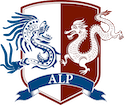Arizona Language Preparatory has developed a lice and nice policy based on recommendations by the Centers for Disease Control and Prevention (CDC), American Academy of Pediatrics (AAP) and the National Association of School Nurses (NASN). More information can be found at https://www.cdc.gov/parasites/lice/head/schools.html.
The CDC’s website states that “[b]oth the American Academy of Pediatrics (AAP) and the NationalAssociation of School Nurses (NASN) have advocated that “no-nit” policies should be discontinued. “No-nit” policies that require a child to be free of nits before they can return to schools should bediscontinued for the following reasons:
- Many nits are more than 1⁄4 inch from the scalp. Such nits are usually not viable and very unlikelyto hatch to become crawling lice, or may in fact be empty shells, also known as ‘casings’.
- Nits are cemented to hair shafts and are very unlikely to be transferred successfully to other people.
- The burden of unnecessary absenteeism to the students, families and communities far outweighs the risks associated with head lice.
- Misdiagnosis of nits is very common during nit checks conducted by nonmedical personnel. Head lice can be a nuisance but they have not been shown to spread disease. Personal hygiene orcleanliness in the home or school has nothing to do with getting head lice.” ALP’s policy is as follows:
- The Joint Corporate and Governing Board recognizes that head lice infestations among students require treatment but do not pose a risk of transmitting disease. The goal is to encourage early detection and treatment with a policy that limits student absences.
- The school may distribute information to parents/guardians of students regarding routine screening, symptoms, accurate diagnosis, and proper treatment of head lice infestations.
- School employees shall report all suspected cases of head lice to the school principal or office personnel as soon as the issue is identified.
- If a student is found with active head lice, the student will be sent home for treatment. The parent/guardian of any such student shall be given information about the treatment of head lice and encouraged to begin treatment of the student immediately and to check all members of the family. The parent/guardian also shall be informed that the student shall be checked upon return to school the next day and allowed to remain in school if no active head lice are detected.
- If a student is found to only have nits or casings, the student can remain in school but the parent/guardian of any such student shall be given information about the treatment of head lice and encouraged to begin treatment of the student immediately and to check all members of the family. The parent/guardian also shall be informed that the student shall be checked upon return to school the next day and allowed to remain in school as long as there continue to be no active head lice.
- Upon the student’s return to school, school staff shall check the student for active head lice. If it is determined that the student remains infected with head lice, the school staff shall contact the student’s parent/guardian to discuss treatment. At that time, a determination of whether the student can remain at the school will be made. As needed, the school may provide additional resources and/or referral to the local health department, health care providers, or other agencies.
- If a student is found consistently infested with head lice, the parent/guardian may be called in for a meeting to determine the best approach for identifying and resolving problems contributing to the student’s head lice infestations.
- When it is determined that one or more students in a class or school are infested with head lice, the principal or designated staff may, at his/her discretion, notify parents/guardians of students in that class or school and provide them with information about the detection and treatment of head lice.
- Staff shall maintain the privacy of students identified as having head lice.
Adopted by Governing Board July, 2019


